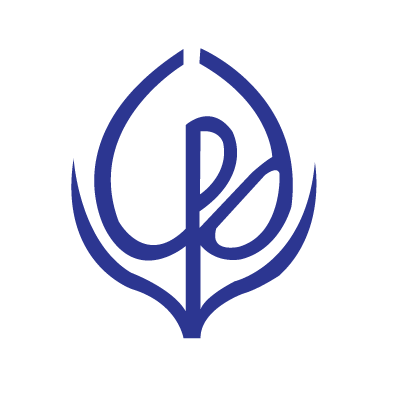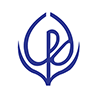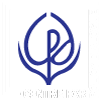Originally posted in The Financial Express on 4 April 2025
The national budget for fiscal year 2025-26 (FY2026) holds significant importance as it is being formulated by the interim government amid a challenging macroeconomic environment. The interim government inherited an economy characterised by high inflation, subdued revenue collection, sluggish budget implementation, a liquidity crunch in the banking sector, and declining foreign exchange reserves. The lower momentum in export earnings and remittance inflows has further exacerbated economic vulnerabilities.
The FY2026 budget, therefore, needs to address these pressing challenges through focused short-term measures while laying the foundation for medium-term reforms aimed at stabilising the economy and enhancing structural resilience.
In this context, the Centre for Policy Dialogue (CPD) has prepared a set of budgetary recommendations and fiscal measures to guide the upcoming budget for FY2026. These proposals focus on reinforcing macroeconomic stability, improving resource mobilisation, strengthening public finance management, improving social sectors such as health and education, addressing the financial situation of the power and energy sector, overcoming environmental challenges, and supporting small and medium enterprises. The recommendations take into account the current economic realities and propose pragmatic strategies to navigate the prevailing uncertainties while promoting medium to long-term economic sustainability. Against the backdrop, a quick look on the development of the key macroeconomic indicators in the first half of the current fiscal year is necessary.
FISCAL SPACE SHRUNK IN H1: Growth of revenue mobilisation was rather subdued during the July-December (H1) period of FY25. In the aforementioned time period, total revenue collection recorded a growth of 4.4 per cent. This implies that if the annual growth target of 32.2 per cent is to be met, then total revenue collection will need to increase by a whopping 55.5 per cent during the second half of FY25. This is indeed a highly unlikely prospect. If the current trend of revenue mobilisation continues, then revenue shortfall could reach BDT 1.05 trillion at the end of FY25.
During the July-December period of FY25, overall budget utilisation was 28.3 per cent, whereas the corresponding figure for FY2024 was 25.5 per cent (MoF, 2025). The implementation rate of Annual Development Programme (ADP) slowed down – reaching 14.8 per cent during the first half of FY25 from 15.9 per cent during the corresponding period of FY24 (MoF, 2025). [According to data from the Implementation Monitoring and Evaluation Division (IMED) of the Ministry of Planning, ADP utilisation during July-December of FY2025 was 17.3 per cent (IMED, 2025a), which reached to 20.8 per cent during July-January of FY2025 (IMED, 2025b).]
In this regard, it needs to be mentioned that following the mass uprising in July-August 2024, considerable reprioritisation and re-evaluation of development projects as well as reshuffling of the administration took place. These are likely to be the major factors behind the slow implementation of ADP. On the other hand, utilisation of non-ADP budget shot up – reaching 35 per cent during July-December of FY2025 from 30.6 per cent during July-December of FY2024.
The major drivers of this phenomenon were the sharp increases in domestic interest payment and expenditures owing to subsidy and incentives. While budget deficit increased, the composition of deficit financing turned out to be the more problematic issue. During the July-December period of FY25, the budget deficit was Tk 295.27 billion. The corresponding figure was Tk 73.21 billion during the July-December FY24 period (MoF, 2025). Borrowing from scheduled banks was catering the majority of deficit financing, which was affecting private sector credit growth and adding to the ballooning interest payment liabilities.
INFLATIONARY PRESSURES CONTINUED THROUGHOUT THE FISCAL YEAR: During the July-February period of FY2025, general inflation remained over 9 per cent at national, rural, and urban levels. In both urban and rural areas, food inflation was generally higher than non-food inflation. On average, inflation in rural areas was higher than in urban areas.
If the proposal to hike gas prices is accepted, then it is likely to adversely impact the inflation scenario – particularly that of non-food items. The uncertainty in the global economy owing to the tariff war might add to this. The Bangladesh Bank’s target to contain inflation within a 7-8 per cent range by end-June 2025 (Bangladesh Bank, 2025a) is likely to be missed if the aforementioned dynamics unfold. Monetary aggregates are unlikely to meet the monetary policy targets During the first seven months of FY25, net foreign assets decreased by (-) 2.6 per cent owing to public sector debt service payments and lower than expected foreign support for budget financing. The higher than targeted growth of net domestic assets can be mainly attributed to the central bank’s considerable liquidity support to a number of banks to meet their daily liquidity requirements. The reliance on bank borrowing to finance budget deficit is evident from the high growth of credit to the public sector. On the other hand, the historical low growth of credit to the private sector implies that net credit to the private sector will need to increase by more than 66 per cent during the last five months of FY2025. This is a highly unlikely prospect.
EXTERNAL SECTOR PERFORMANCE SHOWS SIGNS OF RECOVERY: In terms of growth of both export earnings and import payments, recovery from earlier dismal scenario was observed. Remittance inflow exhibited an impressive 22.6 per cent growth during the first eight months of FY25. However, overseas migration recorded a considerable decline of 22.0 per cent during the aforementioned time period. Significant improvements were observed both in the cases of current account and financial account balances. As a result, overall balance of payments exhibited an improvement to the tune of US$ 3.5 billion. Both foreign exchange reserve and exchange rate of BDT against USD have stabilised compared to the earlier situation. GDP GROWTH DECLINED IN Q1: During the July-September period of FY2025, estimated GDP growth was 1.81 per cent. The corresponding figure for FY24 was 6.04 per cent. In this connection, it needs to be mentioned that the annual GDP growth target for FY25 was set at 6.75 per cent in the national budget for FY25. As has been reported in the media, this target will be adjusted downward to 5.25 per cent in the revised budget for FY25. Whether this curtailed target can be achieved remains a question. For instance, World Bank (2025) forecasts Bangladesh’s GDP growth for FY25 to be 4.1 per cent. Other multilateral organisations such as the IMF and ADB have also made downward adjustments regarding Bangladesh’s GDP growth in FY25.
END NOTE: Given the current dynamics, the key macroeconomic management stance ought to be restoring macroeconomic stability via curbing high inflationary rate, maintaining a stable foreign exchange reserve and enhancing fiscal space. A balanced approach is also required when it comes to financing of the budget deficit, especially considering the impact on the private sector. Finally, precautionary measures must be put in place considering the growing uncertainty in the global economy.
Dr Fahmida Khatun, Executive Director, Centre for Policy Dialogue (CPD); Professor Mustafizur Rahman, Distinguished Fellow, CPD; Dr Khondaker Golam Moazzem, Research Director, CPD; Mr Muntaseer Kamal and Mr Syed Yusuf Saadat, Research Fellows, CPD. moazzem@cpd.org.bd; avra@cpd.org.bd



